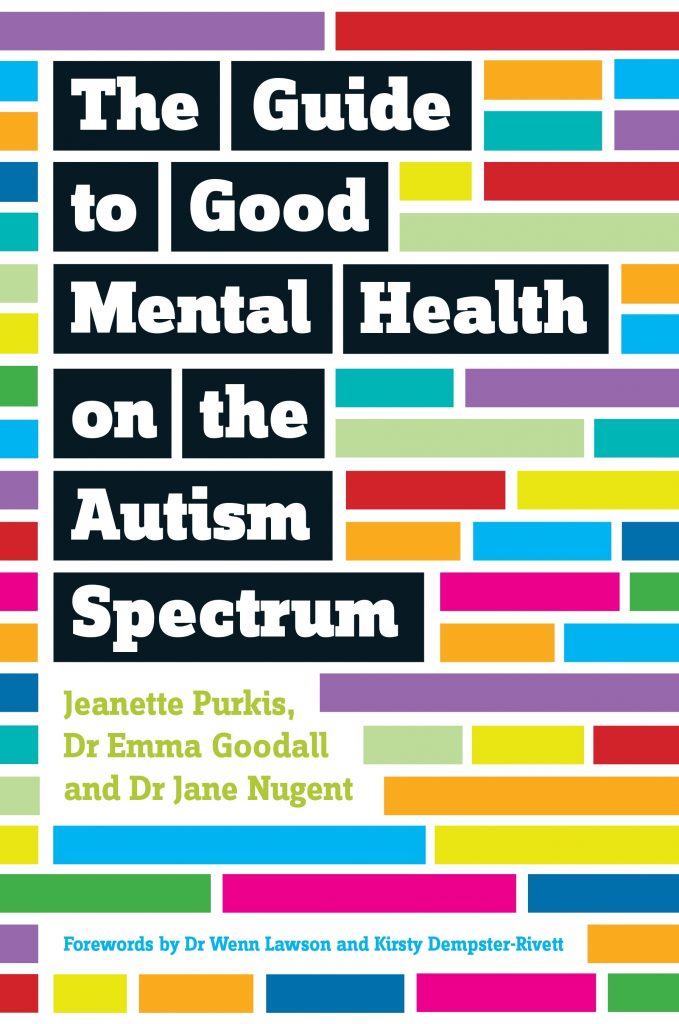As it’s Autism Awareness Month, we’re sharing a series of key extracts from some of our best and most popular books for autistic adults here on the blog. You may have already seen the extract from An Adult With an Autism Diagnosis which we shared recently, and below is an extract from The Guide to Good Mental Health on the Autism Spectrum. This short extract focuses on anxiety and autism, and we hope gives a good idea of what readers can expect from this book.
The high rate of anxiety disorders among people on the autism spectrum may be due in part to the issues that people with autism spectrum conditions have to contend with in being part of the ‘neurotypical’ world. On a daily basis, autistic people have to make sense of a world that is extremely hard to decipher, deal with sensory overload (and worry about potential sensory overload), and navigate an often hostile and incomprehensible social world. All of these experiences can contribute significantly to a person’s anxiety levels. In addition, the autistic traits of perfectionism, preference for structure/routine and repetitive behaviours can all add to the levels of anxiety. In trying to make sense of the world, people with autism often want to imagine the outcomes of events or situations that involve them.
This may start from the position of trying to make the world less stressful by creating a picture or map of the future so that change or new experiences don’t seem quite so daunting. Depending on how the thought processes are structured, however, rather than making life easier, this may lead to catastrophising (or worrying about the worst-case scenario) as people imagine in great detail all the terrible things that may happen. Catastrophising is not usually about likely or even possible events, but can be related to social paranoia – not understanding how non-autistic people operate, so creating an unlikely, negative future that revolves around misunderstanding the motivations of others. An example of this would be someone worrying that they are going to lose their job because they might have seen their manager in a meeting with the door closed, despite the fact that there is no process of redundancies or lay-offs going on in the workplace and they have done nothing wrong at work that might warrant their dismissal. Instead of allowing yourself to ruminate on negative thoughts, try to diminish any anxiety by engaging in a SWOT (strengths, weaknesses, opportunities and threats) analysis, as outlined in Chapter 17 on resilience, or by practising mindfulness as a way to accept and move through the situation.
The autistic thinking style can be very rigid; that is, people with autism usually think very definitively about things. This is often described as ‘black-and-white’ thinking. Autistic thinking is also usually very logical, rather than emotive. This is not to say that people with autism do not have emotions, as they do. It is more that when a decision is required, a person with autism is most likely to make a practical and logical decision rather than an emotion-based decision. Autistic thinking can also be hyper-focused and repetitive, described as being ‘like a broken record’. In other words, people with autism may fixate on thoughts that go around and around in their head. All three styles of autistic thinking are usually present in people with autism and may increase or decrease anxiety, depending on how they are used.
If your repetitive, fixated thoughts become very intrusive and are affecting your state of mind and quality of life, talk to your GP or a mental health professional about this. They can support you so that you can have a better quality of life.
You can find out more about this book on our website HERE, or you can browse a selection of our books written for adults with autism HERE.
2 Thoughts